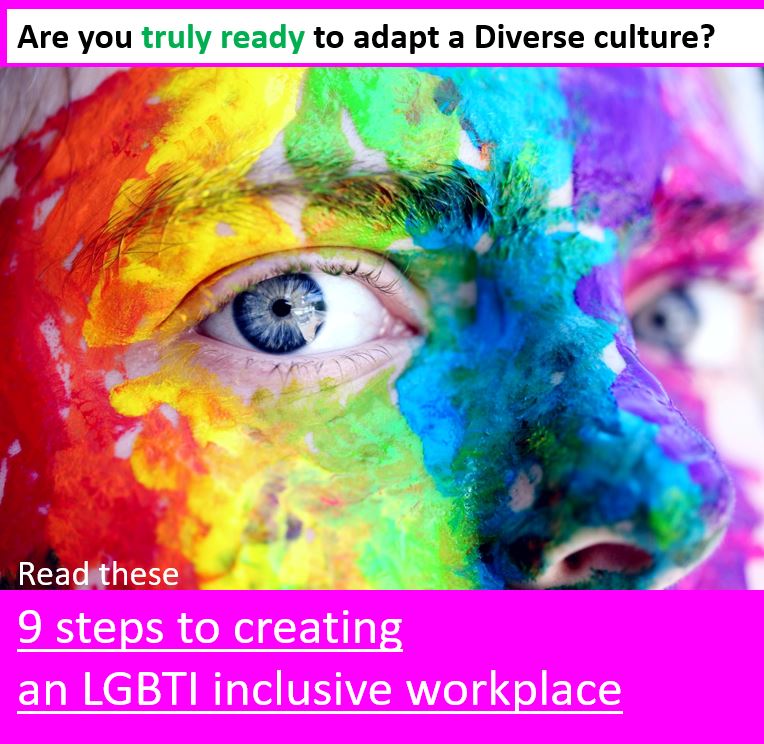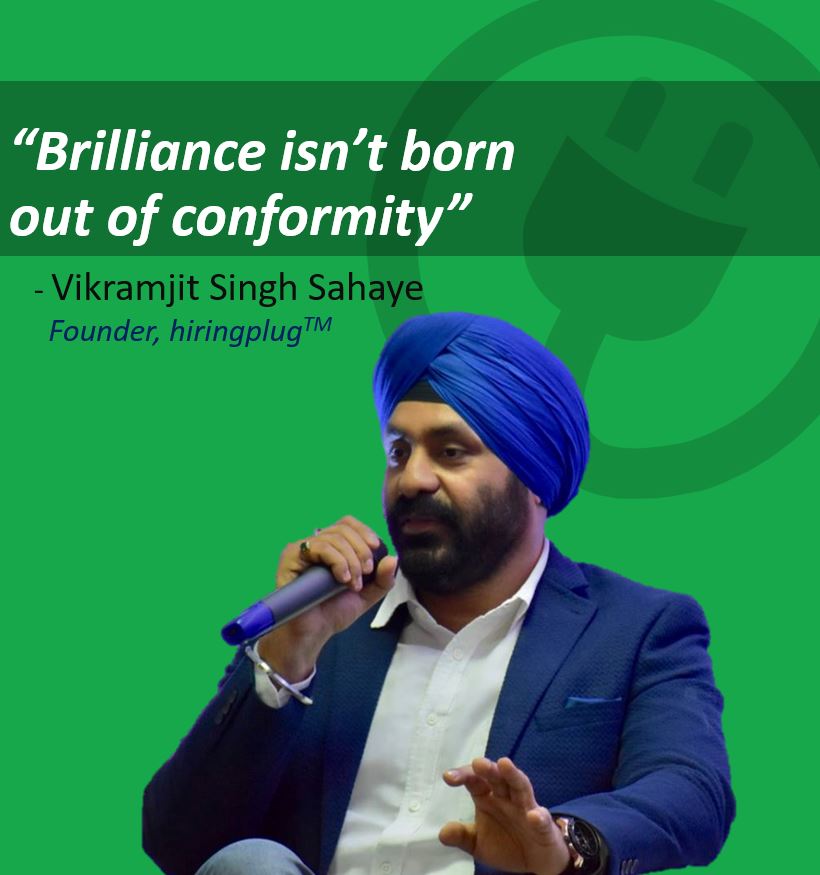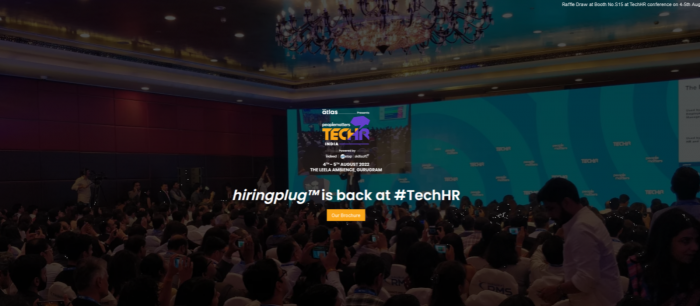In today's world, people have understood the importance of workplace diversity. Diversity and Inclusion have found a special place in the corporate world. All the policies, HR metrics, and programs are centred towards workplace diversity. It is the heart of the organization and the basis of the values these companies portray. But people still have different definitions to describe diversity. Diversity and inclusion are much more than policies, programs, or headcounts. Diversity comes in the form of a multigenerational workforce, a multi-ethnicity one, and more. Diversity is a term that describes how individuals differ not just in terms of appearances or ethnicity, but also in terms of personalities, experiences, beliefs, identities, interests, professional goals, and lifestyles.
The concept of D&I has now evolved to DEIB
Diversity and Inclusion are the popular concepts already, all the hiring teams already are looking for different ways to improve their workplace diversity. But there are some new concepts as well in this domain. These concepts are known as Belonging and Equity. All the above concepts are very closely related to each other but still there are subtle differences between them.
Diversity: Diversity refers to the workforce demographic. It is one of the characteristics that distinguish one individual from another. Gender, ethnicity, physical ability, age, national origin, social status, religion, and other factors all play a role. Any of the elements, or a combination of them known as intersectionality. Diversity is the end goal of all D&I efforts, more of a by-product than a driver of change.
Inclusion: The environment you create for candidates and workers is known as inclusion. All candidates and employees should feel welcome in an inclusive workplace. It ensures that all candidates have equal possibilities for employment, job success, and growth within the company. In D&I endeavours, the most crucial component is inclusiveness. Inclusive employment policies will naturally yield happier, more successful employees of all demographics.
Equity: Equity is known as the levelling of an uneven playing field in organizations. It entails ensuring that everyone has equal access to opportunities, yet it does not imply that everyone receives the same amount of assistance. Why? Because there would be no need to compensate for inequity if everyone was competing on an even playing field. An underrepresented employee does not compete on the same level as an overrepresented employee. If we give equal help to both the groups just reduce the unequal dynamics in the work culture.
Belonging: Belonging is the emotional state that is the goal of D&I efforts. The inclusive processes in the organization are designed to make everyone feel welcome. To be properly welcomed, someone must be accepted just as they are. They shouldn't have to check a part of themselves at the door, either deliberately or unintentionally. Everyone should be pleased to have all the employees in their natural state. So we can say belonging is making everyone comfortable in the organization and give them the perfect work atmosphere to perform.
But, are organizations really prepared to welocme a Diverse culture? The main reason why diversity and inclusion are so important in the workplace is that when employees feel their opinion is being heard and valued irrespective of any caste, race, ethnicity, department, or gender then that empowers the whole workplace and that creates the best working atmosphere. The Pandemic has created new opportinities to get this right. By creating a more inclusive culture can boost employee satisfaction, can result in higher employee productivity, enables effective problem solving and creativity.
“A diverse mix of voices leads to better discussions, decisions, and outcomes for everyone.” - Sundar Pichai
Research by Deloitte Australia shows that "inclusive teams outperform their peers by 80% in team-based assessments". Deloitte's analysis also demonstrates that if just 10% more employees felt included, the company's work attendance would increase by nearly one day per year per employee, with a knock-on effect on productivity.
Even McKinsey & Company stated in their 2018 study “Delivering through Diversity” that there is a link between diversity and company financial performance, suggesting how organizations can craft better inclusion strategies for a competitive edge.
HR leaders across the world are working to drive Diversity and Inclusion (D&I) agenda in their work practices. They are looking for all the possible means to build a culture that does not tolerate discriminatory behavior and the entry of technology-driven movement is slowly edging in this untouched terrain of D&I. The companies are welcoming these new methods wholeheartedly. New solutions to old problems dominate today's business world, and it's never been more important to take advantage of them.
“The key to understanding the different lived employee experiences is technology and data, which should underpin any inclusion and diversity strategy." - Melanie Eusebe Inclusion and Diversity lead Accenture
The problem with most of the organization is that there are inherited unconscious biases among people that hinders the workplace culture. Sometimes these unconscious biases are present in leadership levels which make it very difficult for them to understand or prioritize D&I. This means that, rather than taking defensive action on an individual level, organizations should assess the prime ways in which diversity, equity, and inclusion can be hampered at a foundational level and use methods meant to eliminate those elements from the equation. HR Leaders can leverage technology and improve four main areas to build a more inclusive culture and diverse workplace. These four main categories are:
1. Talent Acquisition: This process is important as finding and hiring the right people is a crucial element of an organization's business plan and it directly affects the company's future success. But people may have an unconscious bias or inherited stereotypes that can impact the hiring process significantly. For such scenarios, technology can be of great use. There are many AI-driven tools like Pomato, Ceipal, and Chatbots like Mya, Olivia, and Jobpal, etc. which many use to optimize the overall talent acquisition process. These tools allow recruiters and management to evaluate each candidate only based on their qualifications, not on characteristics like gender or ethnicity. Some solutions even help with candidate sourcing, ensuring that qualified people from underrepresented groups are included.
Many organizations increasingly rely on hiringplugTM –AI Marketplace of recruiters’, for their Diversity hiring initiatives.
www.hiringplug.com has identified 8 forms of Diversities to identify while posting jobs and their technology triggers it to specialist agencies to source accordingly.
2. Engagement and Retention: Employee engagement is an approach used by company that leads to an emotional commitment from the employees towards the company. Employees will be more productive and care about their work if this goal is met and employee retention refers to an organization's capacity to keep its personnel. Because the expenses of replacing and training new employees have become so high, firms are now concentrating their efforts on maintaining their current staff. To encourage a diverse and inclusive workplace, virtual inclusion platforms are becoming increasingly popular. This type of technology works by allowing employees to share their experiences and have their voices heard without fear of management reprisal. As a result, rather than waiting for an annual engagement study or anything similar, decision-makers can use that knowledge right away to strengthen D&I strategies.
3. Development and Advancement: The first hurdle may be finding and employing diverse and inclusive people, but it is far from the only one. Once talent has been identified, the next step is to ensure that they are not only given the tools they need to succeed, but also that they are working under leaders who are aware of the obstacles they may face in a diverse workplace. According to Forbes, virtual reality technology is at the heart of some of the most successful skill-building tools for both management and the workforce. The purpose of this type of training tool is to create realistic scenarios of problems faced by underrepresented people in the workplace in order to increase empathy and awareness in the workplace
"We have no hope of solving our problems without harnessing the diversity, the energy, and the creativity of all our people." - Roger Wilkins
4. Analytics and Insights: By having data and insights on how many people from minorities and different ethnicities applied for a position and what percentage were hired, an improved hiring decisions can be made. Taking an HR analytics-based approach makes it easy to represent data visually. Graphs and charts make compelling arguments and are practical and easier to assimilate. Leaders can make informed decisions based on the data available and plug any gaps if the company has a diversity problem. Analytic software is critical for establishing a culture that values and actively supports diversity and inclusion. It can be used to look at pay equity, group management, and a range of other aspects to see how effective D&I policies are in the workplace.
- There are many examples of real-life practices where companies have taken technology-driven initiatives to make their workplace more diverse. Companies like Mastercard leverage technology and became one of the best company in the world with diverse workforce. Mastercard have a website known as Diversity Webpage where they display all the necessary details related to all the programs that are currently active in the organisation.
- Another example of this can be seen from Balloonr-Dartmouth, Balloonr it is a technology that collects comments and suggestions from all employees without influencing the results. Each year, Dartmouth holds a rigorous recruitment and evaluation process to choose 10 first-year students to join the Hill Winds Society, a group of around 40 students who serve as alumni ambassadors and help link the Dartmouth community. With the help of this software The Hill Winds Society was able to acquire unfiltered anonymous feedback from evaluators by incorporating Balloonr into the selection process.
- Members developed the confidence to express themselves and contribute ideas that they may not have previously expressed in group conversations.
Technology maynot be able to fully replace humans, but can definitely help to mitigate their bias in decision making. Yet, it all begins, not by adoption, but by Intention!
Hey there !
Author Details
Related Blogs
Popular Tags
Subscribe Now










